A customer behavior–based Social Proof action allows you to deliver customized social influence messages that notify shoppers if products they're viewing are popular with other customers based on how many times the products were viewed, purchased, or added to a fellow shopper's cart.
You can deploy customer behavior–based Social Proof messages on product detail pages or on pages of your site that display multiple product IDs, such as product category listings, search results, and cart pages.
Follow the appropriate steps to create an experience with social proof messaging based on customer behavior.
On Product Detail Pages
Follow these steps to configure a Web experience with a Social Proof action to display a message based on customer behavior on product detail pages.
- Create a new Web experience, and then configure the WHY and WHO settings.
- Click WHAT and then click ADD ACTION.

- Click Social Proof on the Action Type panel, and then click an HTML-based action template configured for use on product detail pages.

- Select an option from the CUSTOMER BEHAVIOR category in Social Proof Type to determine the basis for the message:
- Viewed: The number of times customers viewed a specific product detail page
- Carted: The number of times customers placed a specific product in their carts
- Purchased: The number of times customers bought a specific product
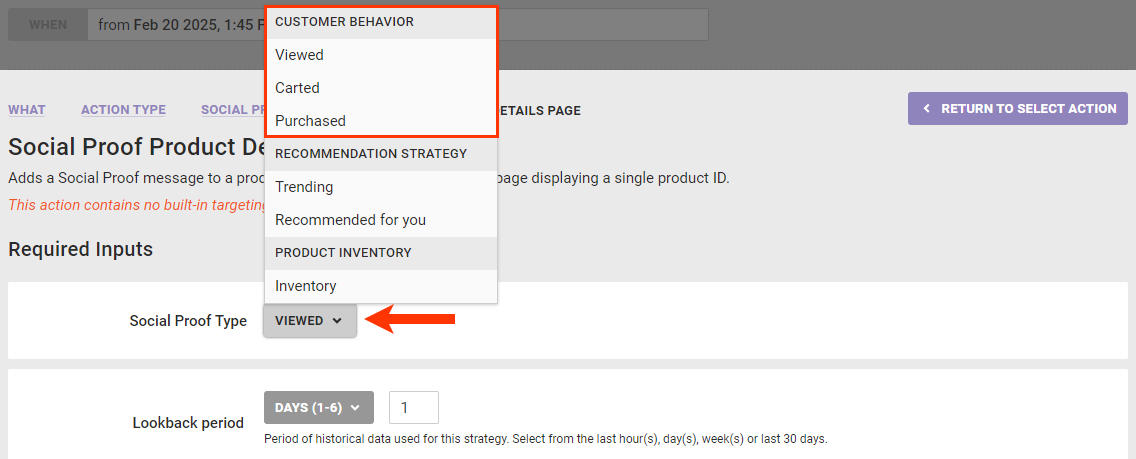
- Configure how much historical data is used. Select an option from Lookback Period, and then type into the text field the number of hours, days, or weeks that falls within the range that appears in parentheses alongside your selection.
- The default lookback setting is Days (1–6), and the default for the text field is 1.
- If you select Minutes (5–55), then you must enter an increment of 5 into the text field.
- An error message appears if you type a number that is outside the stated range for the option you select.

- Type into Minimum Threshold the minimum number of times the event that you selected in step 4 must have occurred within the lookback period before this action fires.
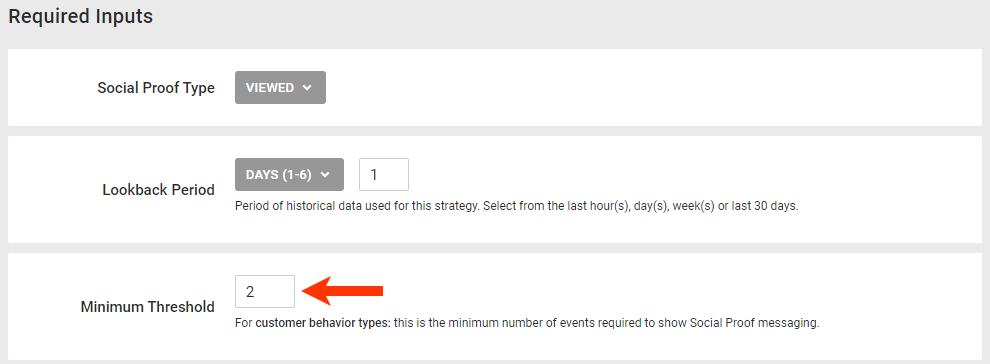
- Optionally, type into Maximum Threshold the maximum number of times the event that you selected in step 4 must have occurred within the lookback period before the action alters its behavior. Next, select how the action behaves once it meets the maximum threshold:
- Display No Social Proof Action: No message appears
- Aggregate Count: The action displays "[maximum threshold]+" instead of the actual count within the body of the message as you craft it in step 8
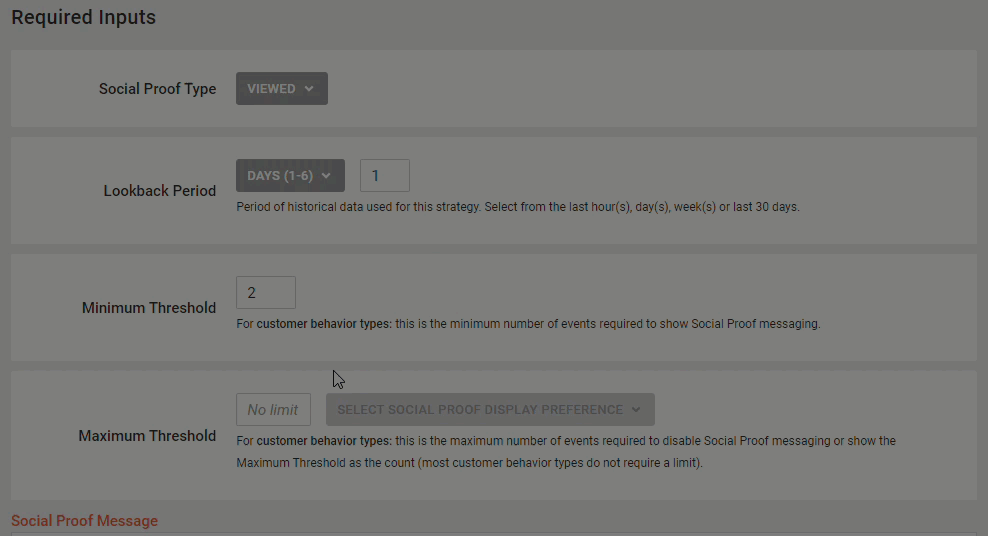
- Optionally, customize the default message that appears in Social Proof Message, or replace the default message with a different one.
- The default message that appears in the editor that is based on the Social Proof type you selected in step 4 and the lookback period you set in step 5.
- If you replace the default message, you must include
{{count}}to have it replaced with the number of times the product has been viewed, placed in a cart, or purchased, as based on the option you selected from Social Proof Type.
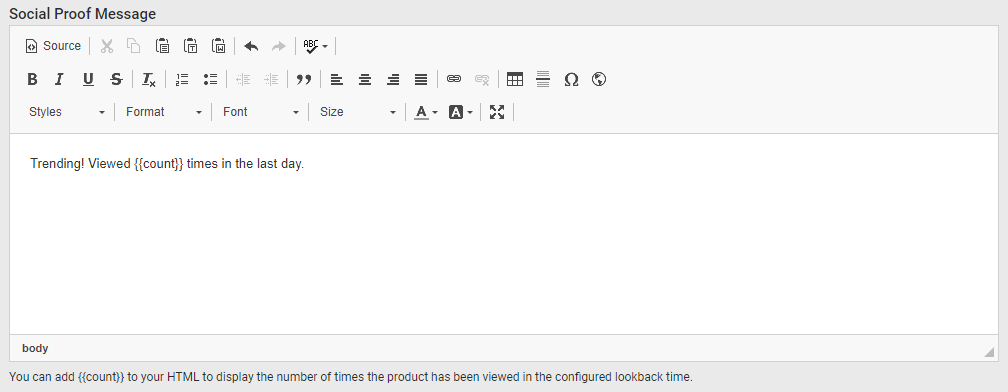
- Input the element selector in Relative Element Selector. See Element Selectors for more information about how to use this field.

- Select from Insert Method where the message should appear in relation to the selector you input in the previous step.

- Optionally, add any of the following settings to the action:
- In the appropriate editor, input, upload, or select JavaScript code that already exists in the account for any JavaScript creative you want to appear as part of the message.
- In the appropriate editor, input, upload, or select CSS code that already exists in the account that you want appended to the DOM in a
<style>or<link>element. - Toggle Select multiple elements, if matched? to YES if you want the message to appear in multiple places if multiple elements match the specified relative element selector.
- Toggle Re-check for Elements toggle to YES if you want the platform to recheck every 50 milliseconds for up to 3 seconds if the specified element is not immediately found.
- Toggle Only run once? to YES if you want the platform to insert the JavaScript only on the first track.
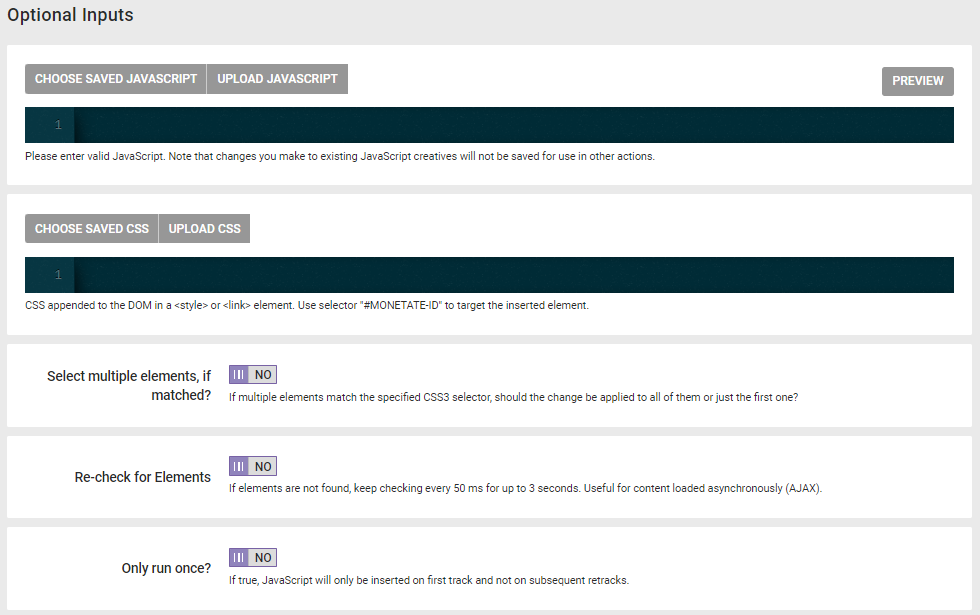
- Optionally, specify additional criteria that must be met for the action to fire by selecting one of the options from ADD CONDITION, and then typing into the respective input field the necessary information to complete the action condition.
- Click CREATE.
On Pages Displaying Multiple Product IDs
Follow these steps to configure a Web experience with a Social Proof action to show a message based on customer behavior on pages of your site that display multiple product IDs.
- Create a new Web experience, and then configure the WHY and WHO settings.
- Click WHAT and then click ADD ACTION.

- Click Social Proof on the Action Type panel, and then click an action template configured for use either on pages displaying multiple product IDs, such as product category listings and search results, or specifically on the cart page.

- Select an option from the CUSTOMER BEHAVIOR category in Social Proof Type to determine the basis for the message:
- Viewed: The number of times customers viewed a specific product detail page
- Carted: The number of times customers placed a specific product in their carts
- Purchased: The number of times customers bought a specific product
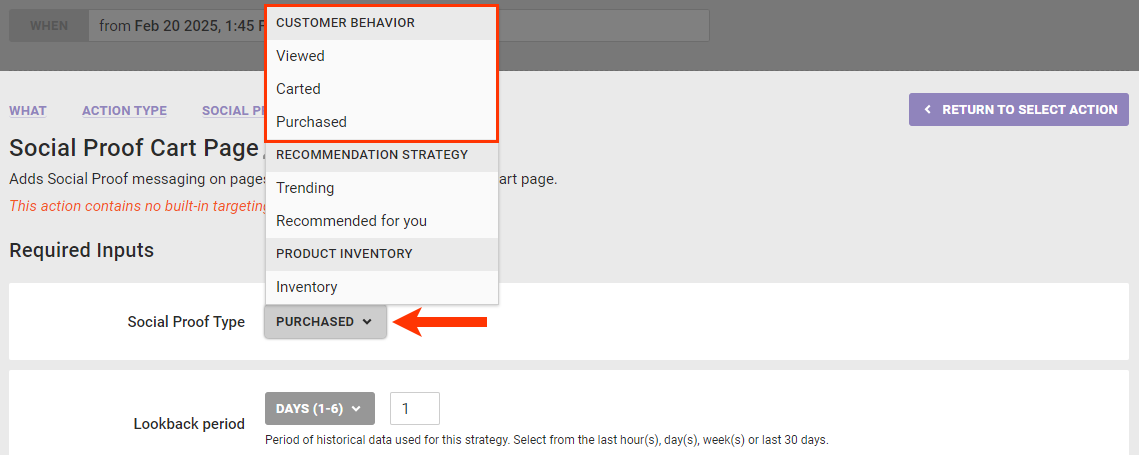
- Configure how much historical data is used. Select an option from Lookback Period, and then type into the text field the exact number of hours, days, or weeks that falls within the range that appears in parentheses alongside your selection.
- The default lookback setting is Days (1–6), and the default for the text field is 1.
- If you select Minutes (5–55), then you must enter an increment of 5 into the text field.
- An error message appears if you type a number that is outside the stated range for the option you select.

- Type into Minimum Threshold the minimum number of times the event that you selected in step 4 must have occurred within the lookback period before this action fires.

- Optionally, type into Maximum Threshold the maximum number of times the event that you selected in step 4 must have occurred within the lookback period before the action alters its behavior. Next, select how the action behaves once it meets the maximum threshold:
- Display No Social Proof Action: No message appears
- Aggregate Count: The action displays "[maximum threshold]+" instead of the actual count within the body of the message as you craft it in step 9
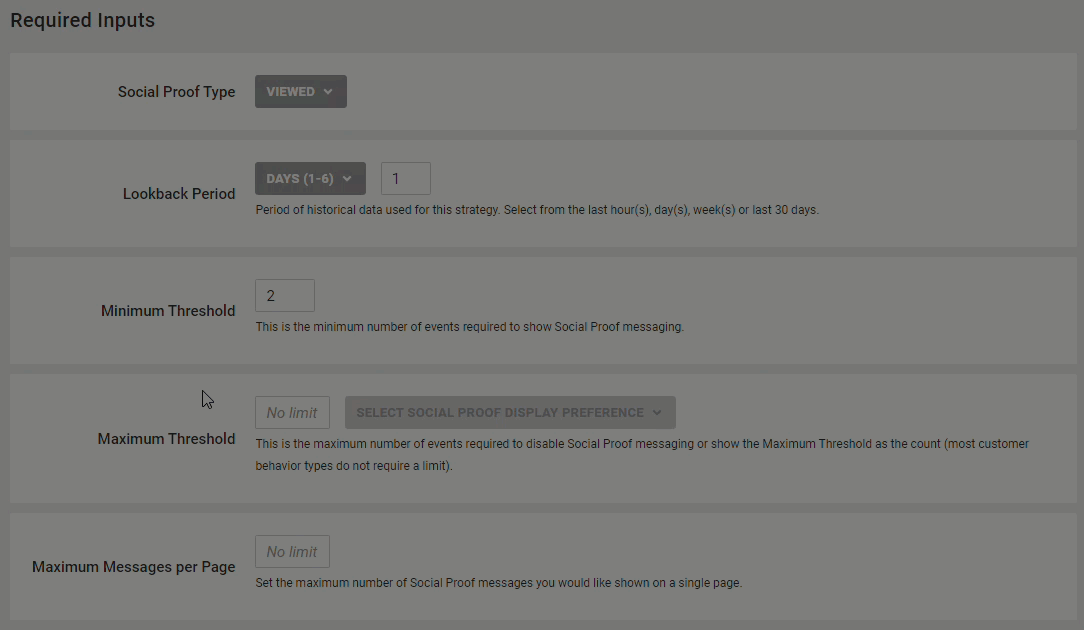
- Optionally, type into Maximum Messages per Page the total number of messages that can appear on one page. The default setting is No limit.

- Optionally, customize the default message that appears in Social Proof Message, or replace the default message with a different one.
- The default message that appears in the editor that is based on the Social Proof type you selected in step 4 and the lookback period you set in step 5.
- If you replace the default message, you must include
{{count}}to have it replaced with the number of times the product has been viewed, placed in a cart, or purchased, as based on the option you selected from Social Proof Type.

- Input the element selector in Relative Element Selector. See Element Selectors for more information about how to use this field.

- Select from Insert Method where the message should appear in relation to the selected element you input in the previous step.

- Optionally, in the appropriate editor, input, upload, or select any JavaScript creative or CSS code that already exists in the account that you want to appear as part of the message.
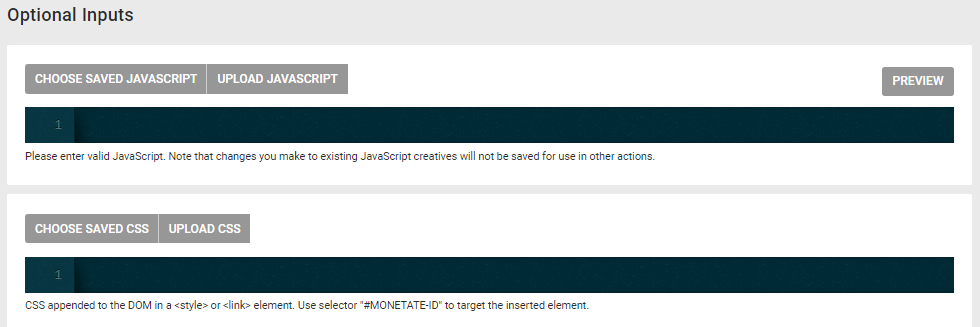
- Toggle Select multiple elements, if matched? to YES if you want the message to appear in multiple places if multiple elements match the specified relative element selector.

- Optionally, toggle Re-check for Elements toggle to YES if you want the platform to recheck every 50 milliseconds for up to 3 seconds if the specified element is not immediately found.

- Optionally, toggle Only run once? to YES if you want the platform to insert the JavaScript only on the first track.

- Optionally, specify additional criteria that must be met for the action to fire by selecting one of the options from ADD CONDITION, and then typing into the respective input field the necessary information to complete the action condition.
- Click CREATE.